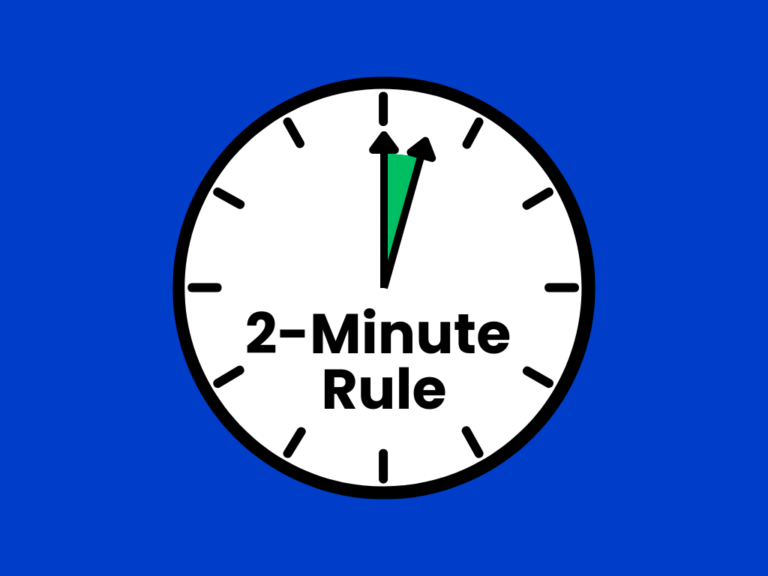Learning can feel overwhelming, especially when dealing with complex subjects. But what if there was a way to make any topic simpler and easier to grasp?
Enter the Feynman Technique—a powerful method for breaking down information into simple chunks, improving your comprehension of the subject, and mastering any topic. It’s a technique I’ve used extensively over the years, with great results.
By following four simple steps, you can greatly improve the way you learn and retain information more effectively. Let’s take a look at these steps!
Contents
What is the Feynman Technique?
The Feynman Technique is a powerful method for learning and mastering new concepts. Named after Nobel Prize-winning physicist Richard Feynman, this technique emphasizes simplicity, clarity, and deep understanding. Whether you’re studying for an exam, learning a new skill, or trying to grasp a complex idea, the Feynman Technique helps you absorb knowledge effectively.
Contrary to popular belief, simplifying ideas and concepts is hard. It’s much easier to create a complex word salad full of abbreviations and jargon, but no one (including yourself) will really understand you. To make something succinct and simple is a challenge, but it’ll greatly boost your effectiveness and productivity. The Feynman Technique supports you in this effort.
The 4-Step Process of the Feynman Technique

Step 1: Pick a Topic and Study It
The first step is to select a topic you want to understand. It could be anything—quantum physics, personal finance, or even a new language.
The key is to focus on one concept at a time. By narrowing your attention, you prevent yourself from becoming overwhelmed and allow for deeper comprehension of that particular subject.
Read actively and take notes, but don’t just memorize—aim to understand the key concepts. So, ask yourself questions like:
What is the main idea behind this topic?
Why does it work the way it does?
How does it connect to what I already know?
The goal of this step is to absorb the foundational knowledge that you’ll later explain in your own words. If you struggle with focus during this step, be sure to check out our guide on improving your focus and concentration.
Step 2: Explain It in Simple Terms
Once you’ve chosen a topic, try to explain it in the simplest way possible. Imagine you’re teaching it to a child who has no prior knowledge. Write down your explanation using plain language and avoid technical jargon at all costs.
If you find yourself struggling to put the idea into simple words, this signals that your understanding is incomplete. The goal here is to force yourself to confront what you do and don’t know.
A useful trick is to use analogies or real-life examples. If you can relate the topic to something familiar, it means you truly understand it.
Step 3: Identify Gaps
As you attempt to explain the concept, you’ll likely encounter areas where your knowledge is lacking. That’s a good thing—it means you’ve identified the gaps that need to be filled.
Common signs of gaps include:
Struggling to simplify certain parts of your explanation.
Feeling unsure about why something works.
Relying too much on memorization rather than true comprehension.
Once you identify these weak points, make a note of them. This is where real learning happens.
Step 4: Fill the Gaps & Refine
Now that you know where you’re struggling, go back to your study materials and find the answers. Read more, watch tutorials, or seek out different explanations until you can confidently address the gaps in your understanding.
After filling in the missing pieces, return to Step 2 and attempt to explain the concept again—this time with more clarity and confidence. Continue this process until you can explain the topic smoothly, using clear and simple language.
▼ Ad
Benefits of the Feynman Technique
The Feynman Technique offers several key benefits:
- Improves Retention. You remember concepts better when you simplify and explain them.
- Encourages Deep Understanding. You go beyond memorization and truly grasp the subject.
- Enhances Communication Skills. You learn to articulate ideas clearly and concisely.
- Illuminates Knowledge Gaps. It forces you to confront areas where you thought you understood but actually didn’t.

Applications in Daily Life
The Feynman Technique isn’t just for students—it can be used in various real-world situations by anyone. I love to use this method to explain complex ideas to colleagues, for example. Here are some ideas for applying it to your life:
- Writing and public speaking. Ensure your message is understandable to a wide audience by breaking it down in simple terms.
- Studying for exams. Break down difficult topics and simplify them so they’re easier to understand and remember.
- Professional settings. Use this technique to explain ideas clearly to colleagues and clients by eliminating difficult jargon and abbreviations.
Two Common Mistakes to Avoid
There are several mistakes I often see when people first try out the Feynman Technique. Avoid these common mistakes to make sure you get the most out of this technique:
- Avoid technical jargon at all costs. This defeats the purpose of simplification and makes it hard to understand. Instead, find ways to explain this jargon in simple terms, so common sense is enough to understand your points.
- Don’t skip identifying gaps (step 3). Identifying and filling knowledge gaps is necessary for this technique to work. So don’t stop at step 2 by explaining it to yourself or someone else in simple terms. Instead, dive deeper and go on a quest to find as many knowledge gaps as you can find.
▼ Ad
Conclusion
The Feynman Technique is a powerful learning tool that helps you break down complex ideas, reinforce your knowledge, and teach others (or yourself) effectively. I’ve used it for the past years with great results, so I hope it’ll help you grow as well!
If you’re looking for even more ways to improve your learning, be sure to check out our guide on how to remember what you’ve read.
So, what’s the next thing you want to learn? Take a moment right now, pick a concept, and put the Feynman Technique into action!




